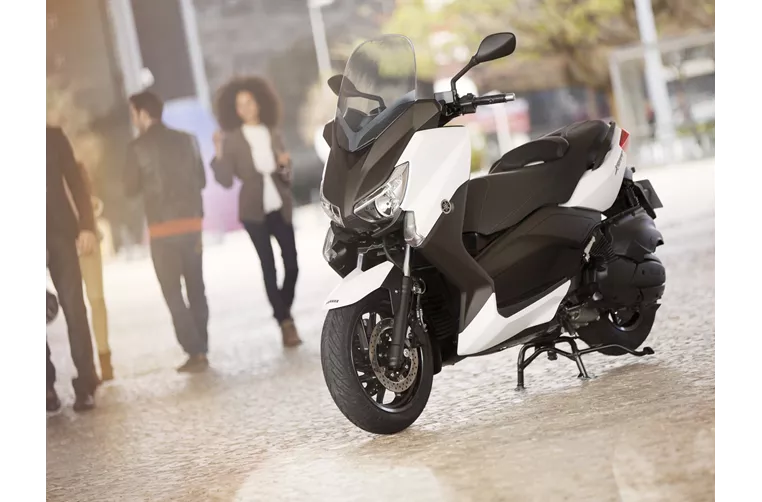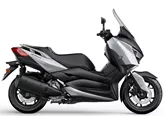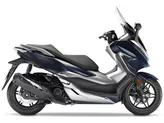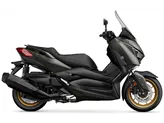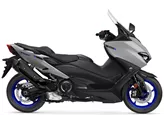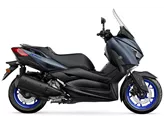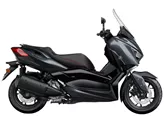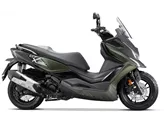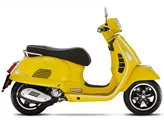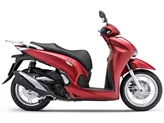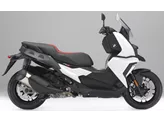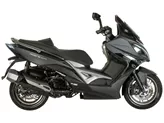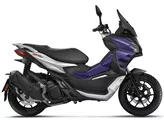Yamaha XMAX 300 2017 vs. Yamaha XMAX 400 2013

Yamaha XMAX 300 2017

Yamaha XMAX 400 2013
Overview - Yamaha XMAX 300 2017 vs Yamaha XMAX 400 2013
The Yamaha XMAX 300 2017 and the Yamaha XMAX 400 2013 are both popular scooter models from Yamaha. While they share some similarities in terms of engine power, transmission type, and suspension, there are also notable differences between the two.
In terms of engine power, the Yamaha XMAX 300 2017 has a slightly lower power output with 28 HP compared to the Yamaha XMAX 400 2013 which has 31.5 HP. However, the torque of the XMAX 300 is slightly higher at 29 Nm compared to the XMAX 400's 34 Nm. Both scooters have a single-cylinder, 4-stroke engine with liquid cooling.
Both models feature a centrifugal force clutch type and an automatic transmission, making them easy to ride and suitable for urban commuting. They also have similar suspension systems, with a telescopic fork at the front and a unit swing suspension at the rear, providing a comfortable and stable ride.

Yamaha XMAX 300 2017
When it comes to braking, the Yamaha XMAX 300 2017 has a single disk brake at the front and a disc brake at the rear, while the Yamaha XMAX 400 2013 has double disk brakes at the front and a disc brake at the rear. This gives the XMAX 400 better braking performance and control.
In terms of dimensions and weights, the Yamaha XMAX 300 2017 has a slightly smaller wheelbase of 1540 mm compared to the XMAX 400's 1565 mm. The seat height of the XMAX 300 is also slightly higher at 795 mm compared to the XMAX 400's 785 mm. The dry weight of the XMAX 300 is 179 kg with ABS, while the XMAX 400 weighs 211 kg with ABS. The XMAX 400 also has a larger fuel tank capacity of 14 liters compared to the XMAX 300's 13 liters.

Yamaha XMAX 400 2013
In terms of strengths, the Yamaha XMAX 300 2017 boasts a powerful Blue Core engine with smooth response, a great chassis, and a Smart-Key system. It also features traction control, 45 liters of storage space, LED lighting technology, and a high-quality finish. On the other hand, the Yamaha XMAX 400 2013 is known for its agile engine, wide range of accessories, high-quality level, and ABS.
However, both models have their weaknesses. The Yamaha XMAX 300 2017 has a soft brake, which may affect its braking performance. The Yamaha XMAX 400 2013, on the other hand, has undersized suspension elements, which may impact its overall ride quality.
In conclusion, while the Yamaha XMAX 300 2017 and the Yamaha XMAX 400 2013 share some similarities in terms of engine and transmission, they also have notable differences in terms of power, braking, dimensions, and weights. Both models have their strengths and weaknesses, and it ultimately depends on the rider's preferences and priorities when choosing between the two.
Technical Specifications Yamaha XMAX 300 2017 compared to Yamaha XMAX 400 2013
Pros and Cons in comparison
Pros and Cons in comparison
Yamaha XMAX 300 2017

Manufacturers often want to create true all-rounders with their vehicles. Yamaha has fully succeeded in this case with the X-MAX 300. The engine has enough power and a very smooth response. Both in the city and in the countryside, the X-MAX feels very safe and manageable, which results in a lot of driving fun. Thanks to the Smart-Key system, traction control and 45 litres of storage space, the scooter is a perfect companion for everyday use. Only the weak brake stops the X-MAX from being the perfect scooter.
Yamaha XMAX 400 2013
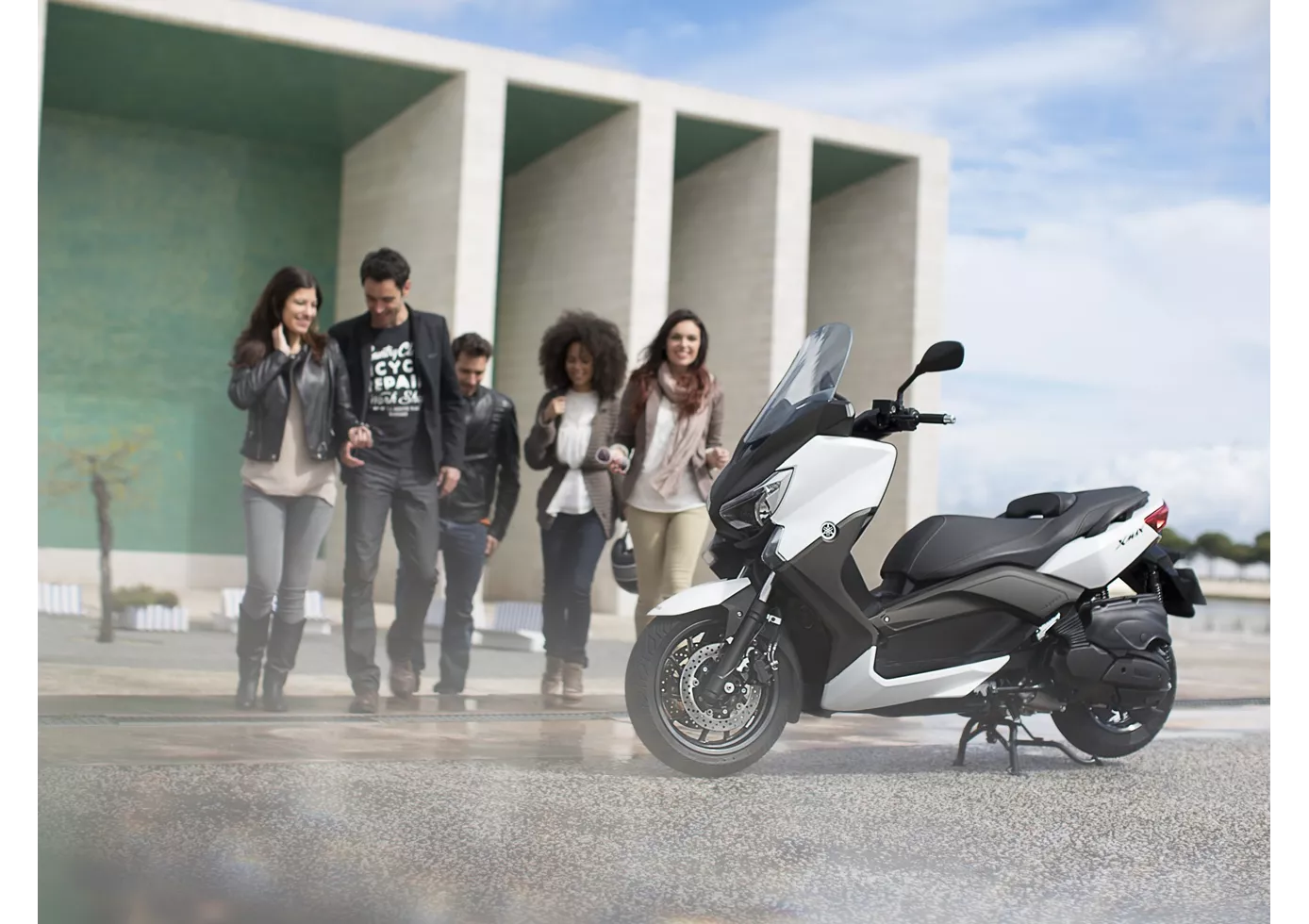
If you really want to find the notorious fly in the ointment of the new X-Max 400, you are most likely to find it in the suspension.
Price Comparison Avarage Market Price Yamaha XMAX 300 vs Yamaha XMAX 400
There are a few key differences between a Yamaha XMAX 300 2017 and a Yamaha XMAX 400 2013. It takes less time to sell a Yamaha XMAX 400 with 38 days compared to 75 days for the Yamaha XMAX 300. Since model year 2017 1000PS.de editors have written 10 reviews for the Yamaha XMAX 300 and 8 reviews for the Yamaha XMAX 400 since model year 2013. The first review for the Yamaha XMAX 300 was published on 10/19/2016 and now has more than 34,700 views. This compares to more than 60,000 views for the first review on Yamaha XMAX 400 published on 5/21/2013.

